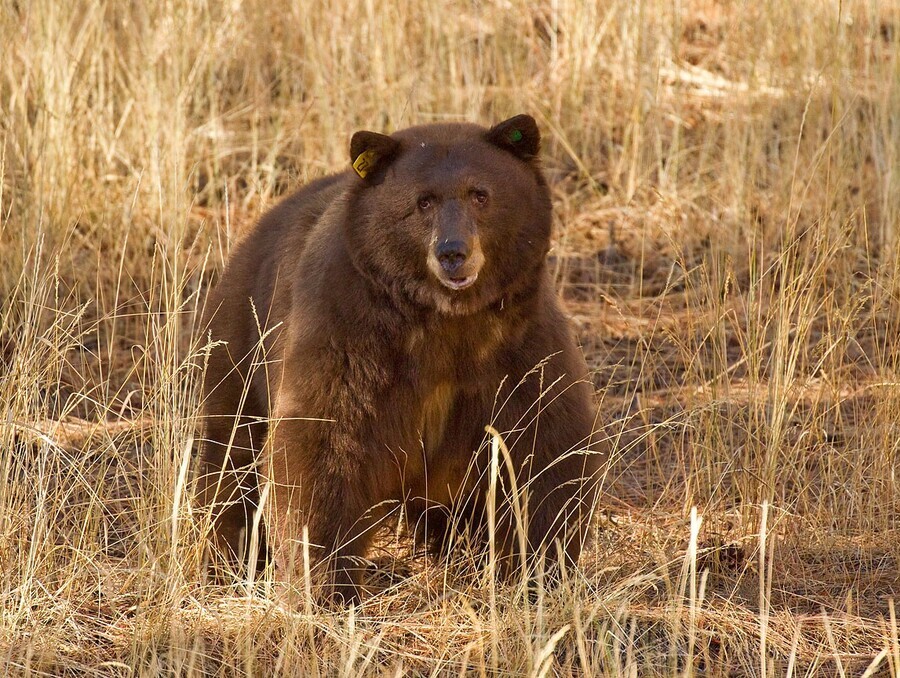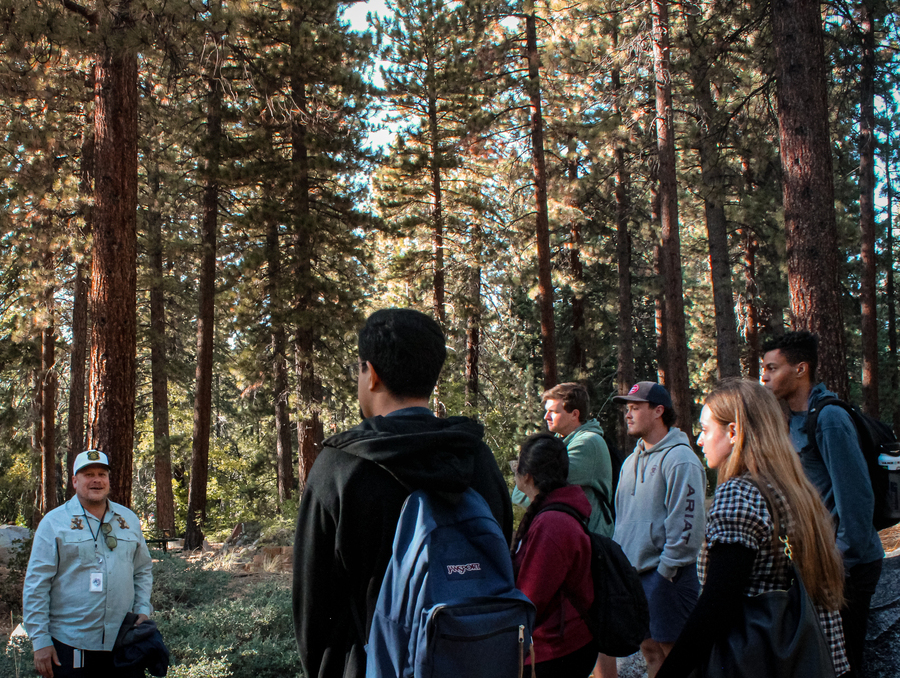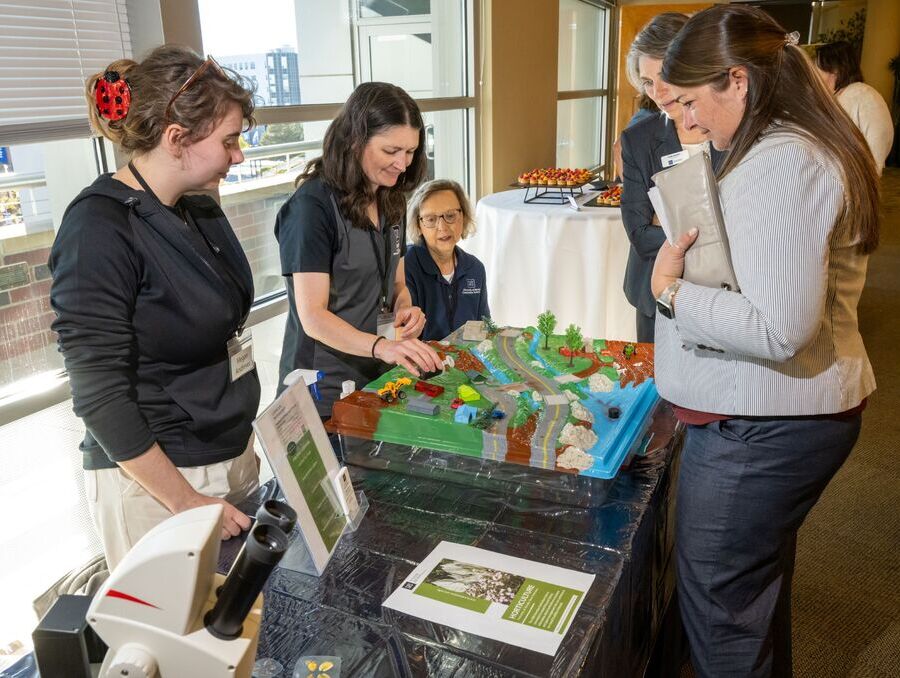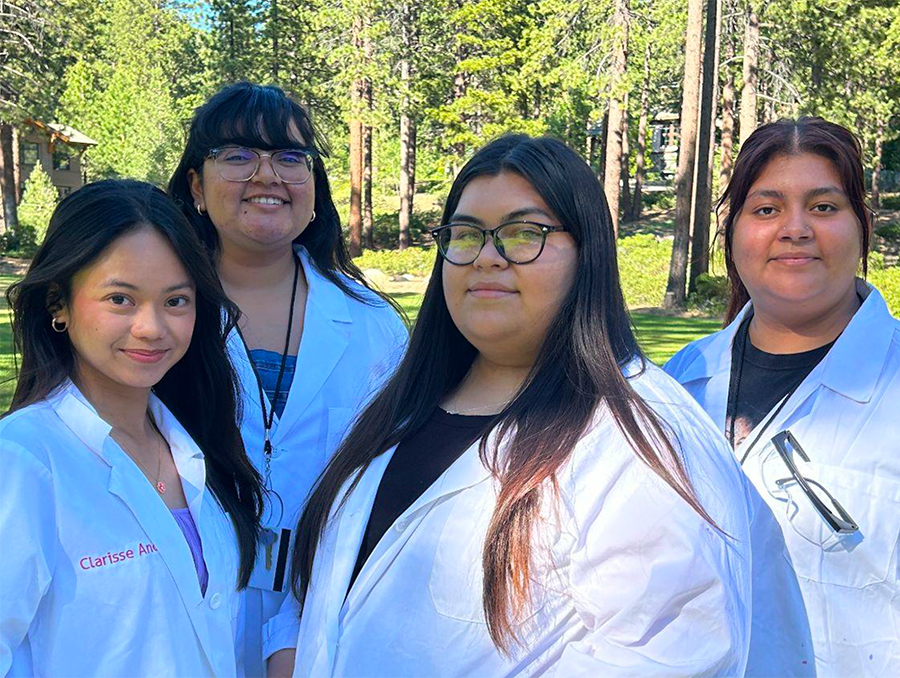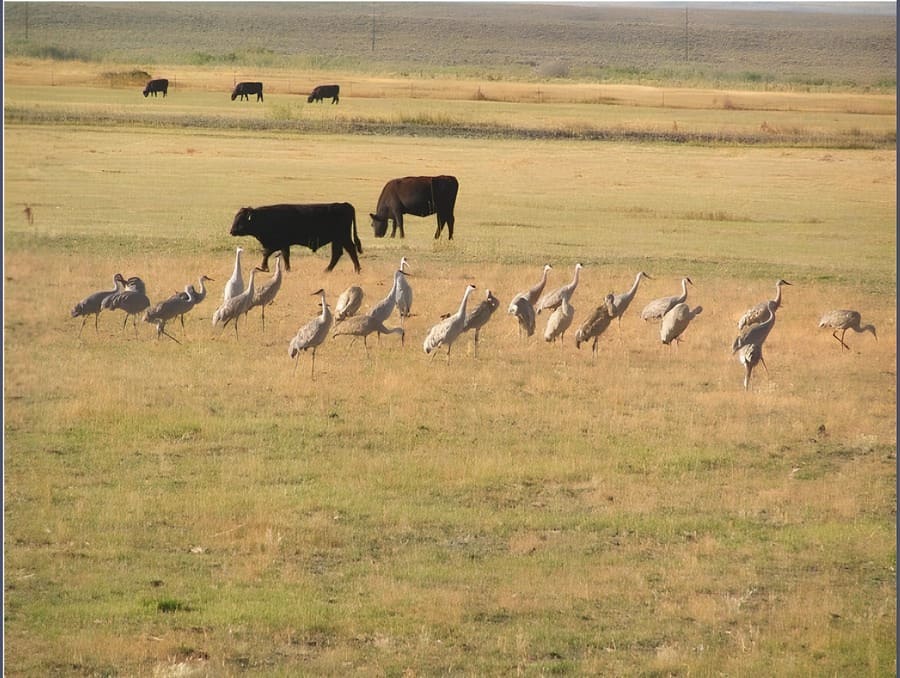We get frustrated when those late-spring frosts decimate our tomato plants that we so enthusiastically planted after we thought spring had finally arrived. But, imagine if that was our only food source. Researchers at the University of Nevada, Reno are documenting how, in some years, spring temperature swings are wiping out natural food sources for black bears in western Nevada’s Sierra Nevada mountain range, and forcing them to seek their sustenance from our yards and gardens, and sometimes even our pantries and chicken coops.
“We all notice when there’s a late frost, from the effects on our yards and gardens,” said Kelley Stewart, leader of the research project and professor in the University’s Department of Natural Resources & Environmental Science, housed in the College of Agriculture, Biotechnology & Natural Resources. “It’s much worse up on the hills for bears and other wildlife. The temperatures are more severe. The plants start growing and flowering with an early spring warm-up, and then there’s a late-season frost that takes them all out. It especially affects berries and the harder things like acorns, pinenuts and other things that nature normally provides for the bears.”
That drives the bears to seek food from human sources, increasing human-bear interactions. Stewart points to 2022, a year with a late frost date. That year, the number of bear complaints in the study area ballooned from about 500 reported in an average year to about 1,500, according to Heather Reich, who also worked on the project. Reich, an alum of the department’s graduate program, is co-lead author of the article publishing the project’s results featured in the journal Ecosphere early this fall. She now operates her own business, Bear-ier Solutions, to help provide deterrents for bears and prevent the need for lethally removing them.
“We had that late-season frost in 2022,” Reich said. “They were getting bombarded with calls. We had never seen bears take so much advantage of protein – chickens and goats.”
The research project showed that when bears have to venture into more human-occupied areas due to the late frosts and resulting food scarcity, bear mortality rates increase, due to vehicle incidents or lethal removals resulting from human-bear conflicts. There’s also a slight increase in natural mortality rates due to the scarcity of food and the stress that scarcity imposes on the bears.
“The bottom line is that a bear is about twice as likely as having to be lethally removed in a year with a late frost than in a normal year,” said Associate Professor Kevin Shoemaker with the University, a statistician on the project and co-lead author of the journal article. Associate Professor Perry Williams also worked on running the numbers for the project. Shoemaker, Williams and Stewart all also conduct research as part of the College’s Experiment Station unit.
Stewart says the researchers were originally looking at the effects that snowpack and drought have on bears’ behavior and mortality, as drought has taken most of the blame for increased bear-human interaction and bear mortality. While it’s true that drought does have such an effect, it soon became apparent that these spring temperature swings were a bigger issue.
“Drought will reduce the food supply, but the late-season frosts almost completely take it out,” she said.
That concerns the research team.
“They’re part of the ecosystem, and an indicator of a healthy ecosystem,” Reich said. “They do a lot of carrion cleanup (disposing of dead animals). They are charismatic. People love them.”
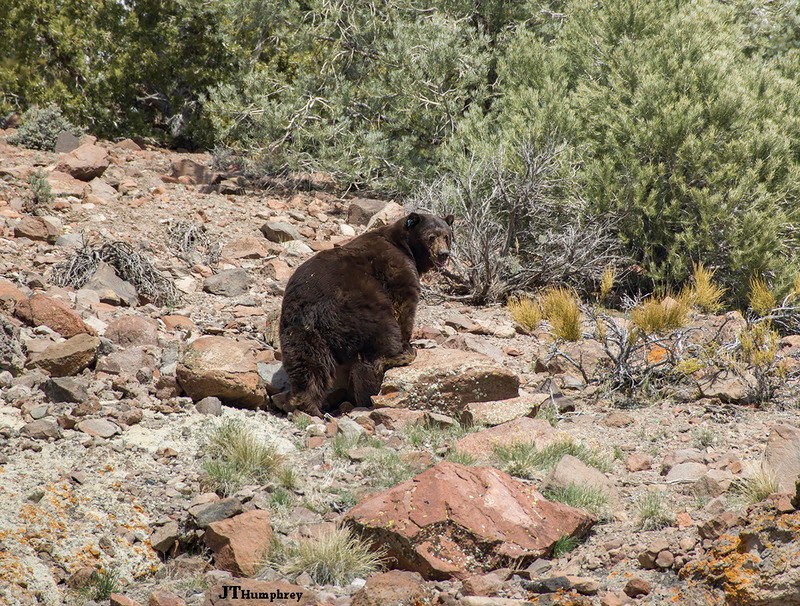
Reich said the bears disappeared from the area in the early 1900s, but began coming back in the 1980s, after reforestation in the area. There are now some 500 bears in the area, and members of this research project actually developed the database that started tracking them back in 1997, when one of them was a student at the University and the other had graduated from the program.
“Probably one of the most robust databases for bear tracking in the country”
Jon Beckmann, then a doctoral student, and Carl Lackey, who earned his undergraduate degree in the department and was working as a wildlife biologist with the Nevada Department of Wildlife, developed the database in 1997. Beckmann is now the assistant director of research in the Wildlife Division of the Kansas Department of Wildlife & Parks, and Lackey remains a wildlife biologist with the Nevada Department of Wildlife, the agency that now maintains the database.
The database consists of information tracked by capturing and uniquely marking the bears, and then releasing them, recording things such as their age, sex, health, where they are, and importantly, mortality, including vehicle incidents or lethal removals resulting from human-bear conflicts. Beckmann and Lackey continue to collaborate closely with what has become somewhat of an unofficial “Wolf Pack Bear Team,” a team that is still tight today, connected and driven by their appreciation for the bears.
“When Jon was a Ph.D. student at the University, he helped Carl develop this database, which is probably one of the most robust in the country,” Stewart said. “I really have to give them kudos for keeping this database for 25 years and letting us use the data. They continue to be so supportive, three decades later, even with studies like this one, which wasn’t funded.”
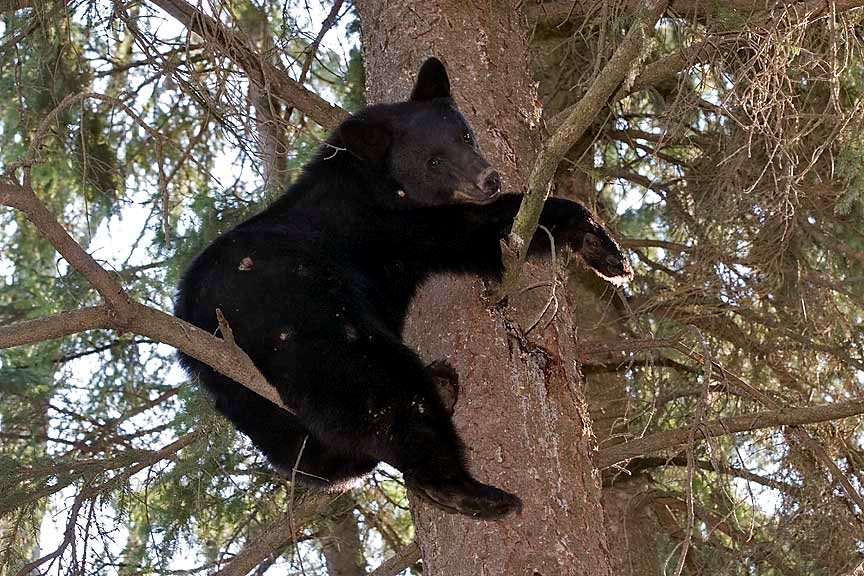
A class project turns into published research, even after grades are posted
This particular research project actually started out as a class project in a graduate course taught by Shoemaker in 2021. Three of the students, including Reich, Megan J. Osterhout and Joshua P. Vasquez, along with Shoemaker, wanted to see it through to completion, and with the help of the “Wolf Pack Bear Team,” they completed the project, and their results were published this fall.
“We just kept chipping away at it, even well after the class had ended and the students had graduated,” Shoemaker said. “When we had the time, we would try to move it toward publication.”
Reich said this project, as well as continued tracking and research on our bear population, is important to have, as it can help inform decisions of our wildlife managers.
“The issue of human-bear conflict is only going to increase, as both populations increase,” she said. “By watching for late frost dates and knowing the effects on the bears’ natural food sources and their behavior, the management agencies can increase public education efforts during those years to alert people about how to manage their properties and their actions to best avoid human-bear conflicts. We also hope the managers will realize from the data that bears causing a little havoc during those particular years often are not habitual ‘problem bears,’ needing lethal removal. Rather, they’re just trying to survive the best they can during a particularly challenging year. With that in mind, perhaps they’ll know they can grant them a little leniency.”
